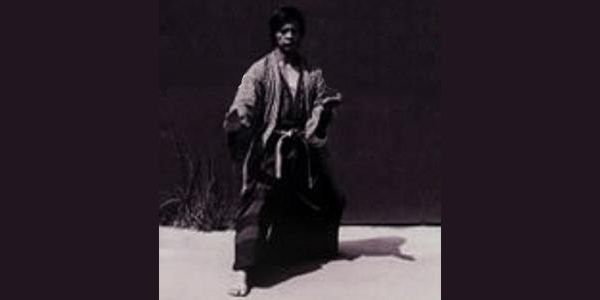Kuntao is often translated “way of the fist”, but literally it means fighting art. It is a Hokkien term for martial arts created by the Chinese community of Southeast Asia, particularly the Malay Archipelago. Although it is most commonly practiced in Indonesia among the Chinese Indonesian communities, styles of kuntao are also practiced in Singapore, Malaysia (especially Borneo) and the Philippines where Chinese martial arts were brought by merchants, labourers and other settlers from south China. The different terrain forced the styles to have to adapt as did the local styles and fighting with local weapons. Many (if not most) styles of kuntao have incorporated techniques from silat and some forms even changed their name from “kuntao” to “silat”. Styles which combine both kuntao and silat together are sometimes called kuntao silat.
Kuntao was once practiced in secrecy and only passed down through families. It was kept hidden, not only from non-Chinese, but also from people of differing clans. Although a few non-Chinese in Southeast Asia are known to have historically learned kuntao, teaching outsiders only became widespread in the latter half of the 20th century. Old styles of kuntao are today considered by some to be “true” Chinese martial arts because they predate the Shaolin Temple’s destruction. With the advent of Mixed Martial Arts in the United States, the art has begun to approach mainstream dissemination. Even so, few traditional kuntao schools exist in the States today and it is little known in the West.
Kuntaw is a derivitive of Kuntao and it was started in the Philippines, (Mindanao region) It has been attributed mainly to the Tausug tribe. Kuntaw is considered a hard-soft style. It has cat like movements and quick short leg techniques. Modern day Kuntaw has incorporated many techniques from a number of different styles. The GrandMaster of Kuntaw is Carlito A. Lanada, Sr. and he is attributed with the formation of modern Kuntaw and the spread of this style throughout the world. There are schools of Kuntaw in the Philippines, in Hong Kong, Austrialia, Saudi Arabia, UAE, United Kingdom, Mexico, Canada, and the United States just to name a few.
Styles
Kuntaw (Kun-tao, Kun-too) or the ancient art of Filipino hand and foot fighting, is originally from China and was brought to the Philippines by way of Indonesia from China. Kun-tao is thought to be derived from Shoulin Chun-fa by Monk Dama Larma who left the monistary after one of the burnings by the government. Kun-tao specifically spread to the southern Philippines island of Mindano where Muslim royalty utilized its variety of sudden forceful punches, kicks and chopping techniques guided by scientific movements as self defense. Kun-tao has proven to be an effective fighting art. The art was kept secret and passed down through families.Weapons were predominantly with many different swords, spears, and knives. Practitioners not having access to bladed weapons used hard wood or more commonly rattan, a native vine growing wild in the jungles and hardened when dried and burned.
A skillful fighter, Yuyong Huenyo, left Mindanao in the early 1900’s and moved to Luzon, the largest island in the north, settling in the Bicol region. Yuyong changed his last name to Lanyada and later changed it to Lanada per Spanish decree of having a Spanish surname. He gained the name Pilato, which indicates that his skills in fighting arts were well known. He passed on his fighting techniques to his son Yon Iban Lanada, and he passed them to his son, the current Grand Master of Kuntaw, Carlito A. Lanada, Sr.
Carlito Lanada founded the Philippine Kung-fu/Karate Association in 1960, and began to introduce Kuntaw. The name Kun-tao was changed to Kuntaw to better conform to the Tagalog language of the Philippines. Carlito then changed the name to Maharlika Kuntaw Association and finally to Kuntaw ng Pilipinas. By 1989 he had many students and instructors and many of those found jobs overseas, especially the Americans from the local base in Olongapo City, which is where Carlito Lanada had settled and was teaching.
In 1989 he founded the International Kuntaw Federation to unify and organize Kuntaw practitioners around the world. Headquarters for the International Kuntaw Federation is now located in San Diego, CA.
Kuntao angin or silat angin (meaning “wind kuntao/silat”) was founded in 1977 by Yap Mat from Kedah, Malaysia. He combined seni gayong with the knee and elbow strikes of tomoi, the hand techniques of Wing Chun and the energy drills of yiquan. It is known for its deceiving circular attacks and nerve point manipulations.
Kuntao harimau Jawa is the traditional Javanese tiger style of kuntao. One of its main tenets is a mantra which practitioners chant to acquire the attributes of a tiger.
Kuntao Silat deThouars was created by Willem deThouars by combining several styles of pencak silat and kuntao.
Malabar Kuntao Silat was created by Steve Gartin, a student of Willem deThouars. It is basically Kuntao Silat deThouars formulated into a more structured learning approach. The final transmission of this form, including both the external and internal skills, is sometimes called American kuntao silat.
Liu Seong Kuntao was created by Willem Reeders based on his studies in Indonesia.
Talio The Art Of Triangular Fighting was created by Roberto Torres based on Visitacion Kuntao-Arnis, Wu Kung Kuntao and several styles of silat.
Source: Wikipedia



